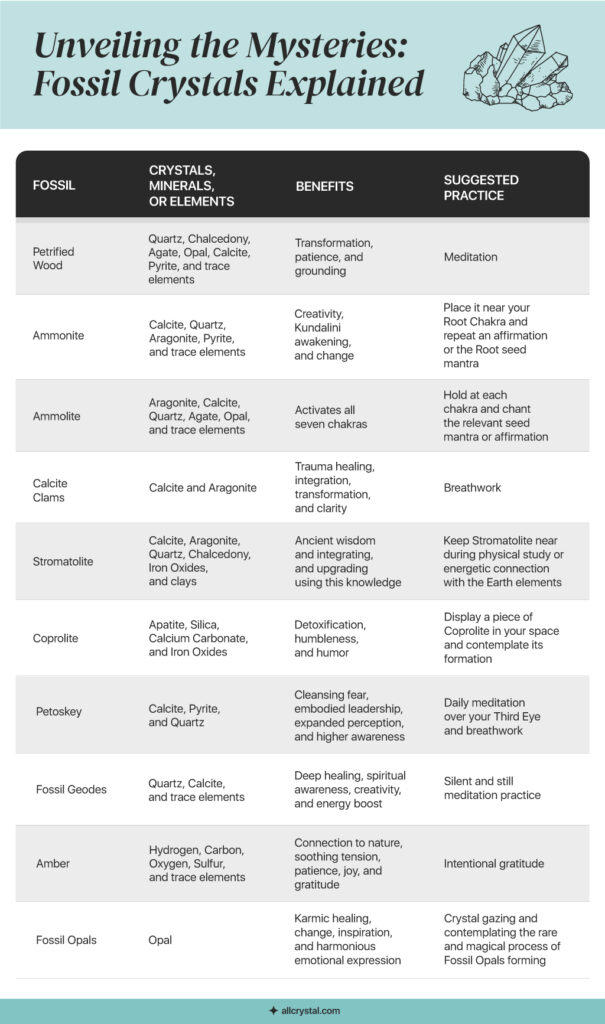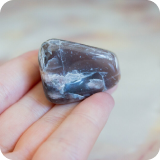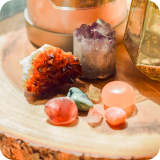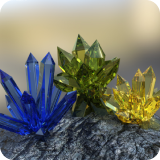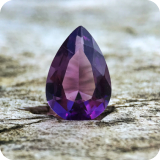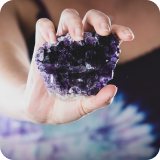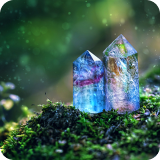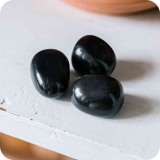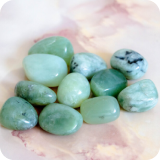- History and Meanings of Fossil Crystals
- 10 Fossil Crystals
- FAQ
- Start Using Fossil Crystals
The first thing that may pop into your mind’s eye when you hear the word “fossil” are dinosaur bones. Or, since you are crystal lovers, you may imagine an Ammonite spiral. But did you know that there are other various types of unique fossil crystals? Many fossils are actually made up of stone, so let’s explore what exactly is a fossil crystal.
Fossil crystals are the remains of ancient life forms that have been turned into crystals and preserved in this way, primarily through the process of permineralization. This includes a series of perfect environmental conditions over millions of years, where various minerals from the ground, oceans, or lakes replace the organic matter of a plant or animal.
Different types of fossilized crystals can occur. As mentioned, they are formed through replacement, which is the initial fossilization process. Fossil crystals can then vary due to the precipitation of minerals within spaces in a fossil, other external minerals filling in cracks, and alteration, or recrystallization, of existing minerals due to specific environmental conditions.
Interesting Fact: Some of the fossils that we may think are crystals are actually technically mineraloids. Examples of this are Amber and Opal.
History and Meanings of Fossil Crystals
Fossil crystals are millions, and even billions, of years old. Some of the oldest known specimens that we may consider as fossil crystals are fossilized Cyanobacteria. These are microfossils of ancient bacteria that are mineralized and preserved as Stromatolite or Pisolite.
There are many more fossil crystals, including bones, shells, coral, wood, plants, and creatures that have been preserved, transformed into, or included with stones. This includes Calcite, Quartz, Agate, Chalcedony, Jasper, Pyrite, Barite, Limonite, Hematite, Aragonite, Apatite, Gypsum, and Selenite, or mineraloids, such as Amber or Opal.
Many fossil crystal specimens are incredibly unique, and some are quite rare. It is best to be gentle and mindful with your fossil specimens by storing them separately, out of direct sunlight, and away from excess moisture and heat.
It is best to minimize the handling of delicate specimens. If it is necessary, though, you can clean your more intricate or textured fossils that are hard and durable enough with a soft-bristled brush.
Learning about the composition of your fossil crystal is rather important, as it will inform you exactly how to care for and handle them. Knowing more about the minerals that make up the structure of your fossil will also give you greater insight into its energetic benefits and meaning.
Fossil stones’ meaning is nuanced. They tell the stories of and connect us with ancient life and incredible transformations of creatures or plants. A specific fossil’s history, geological experience, composition, and physical properties can inform its nuanced meanings and metaphysical benefits.
10 Fossil Crystals
Now we will explore some fascinating fossil crystals and mineraloids in more detail, including the metaphysical benefits and suggested practices to connect with each variety
Petrified Wood
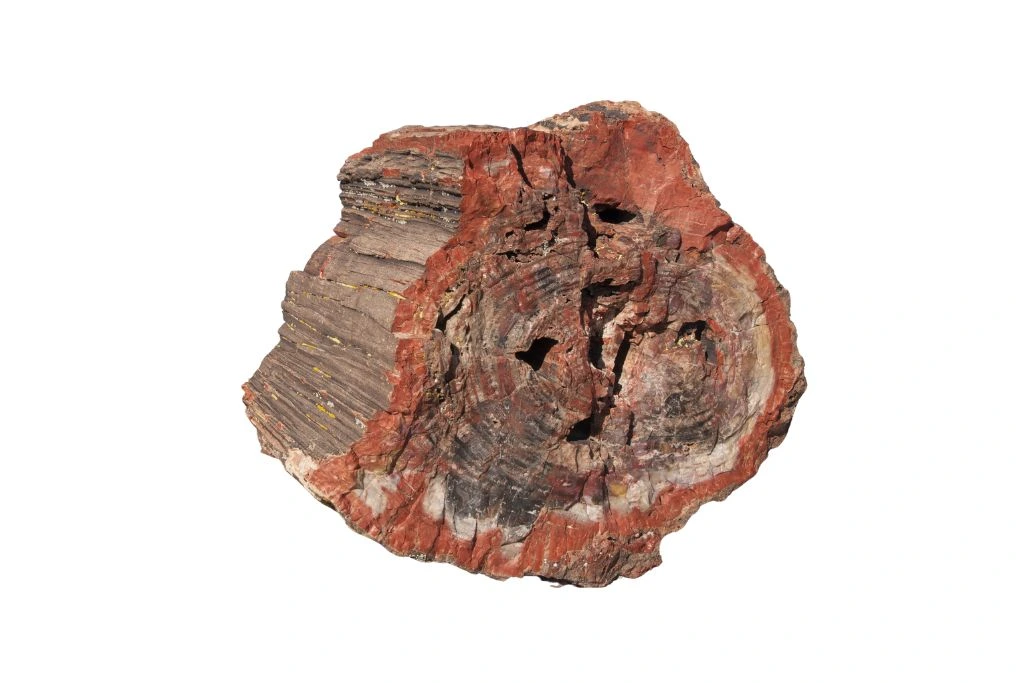
Petrified Wood is most commonly replaced by silica, which leads to this fossil being made up of Quartz, Chalcedony, or Agate, along with trace minerals that lead to different colors. It can also rarely include minerals such as Pyrite, Opal, Calcite, and more.
You can work any variety of Petrified Wood to connect with an earthy energy that is naturally transformative. Meditate with Petrified Wood to encourage patience and grounding as you experience the natural changes around you or within. This fossilized crystal reminds you to appreciate your unique expression and transformation journey.
Ammonite
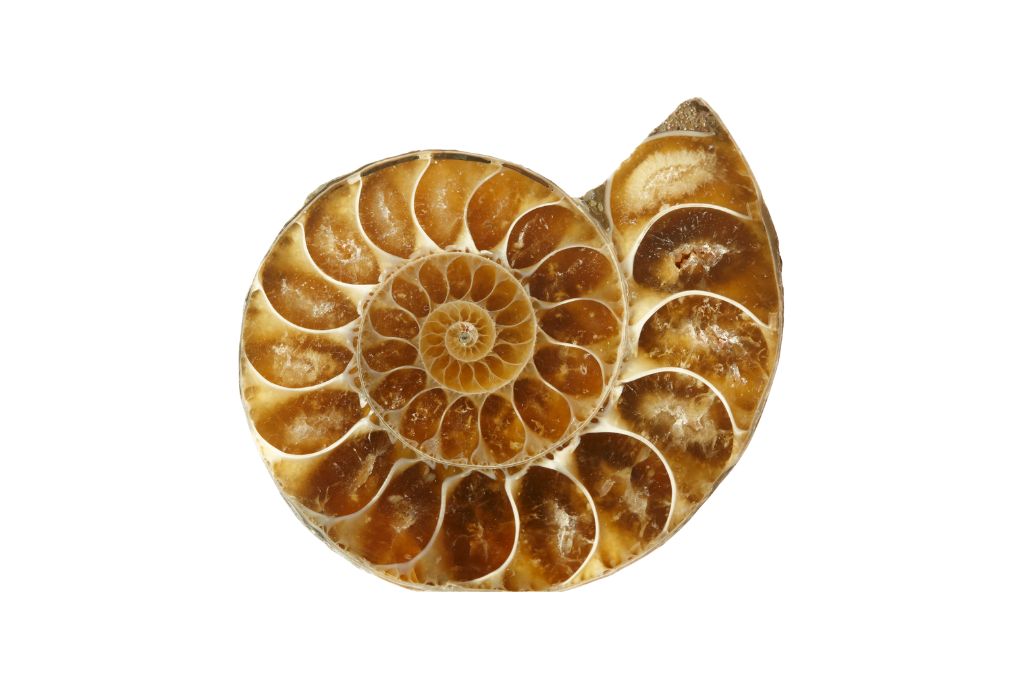
The fractal spiraling shells of ancient cephalopods, found abundantly, can be composed of Calcite, Quartz, Aragonite, and Pyrite. Some specimens display gentle iridescence. The energy of Ammonite, like many fossils, is about the natural process of change.
They are also excellent fossil crystals for creativity and can inspire Kundalini awakening. All Ammonite specimens are connected to change and, depending on the minerals and crystals present, they can offer energetic support accordingly. For example, an Ammonite that is predominantly composed of Pyrite can support changes surrounding your financial success.
Placing your piece of Ammonite at your Root Chakra, chanting its seed mantra and speaking aloud affirmations surrounding the changes you would like to manifest or embody, is a powerful way to make use of the energy Ammonite has to offer.
Ammolite
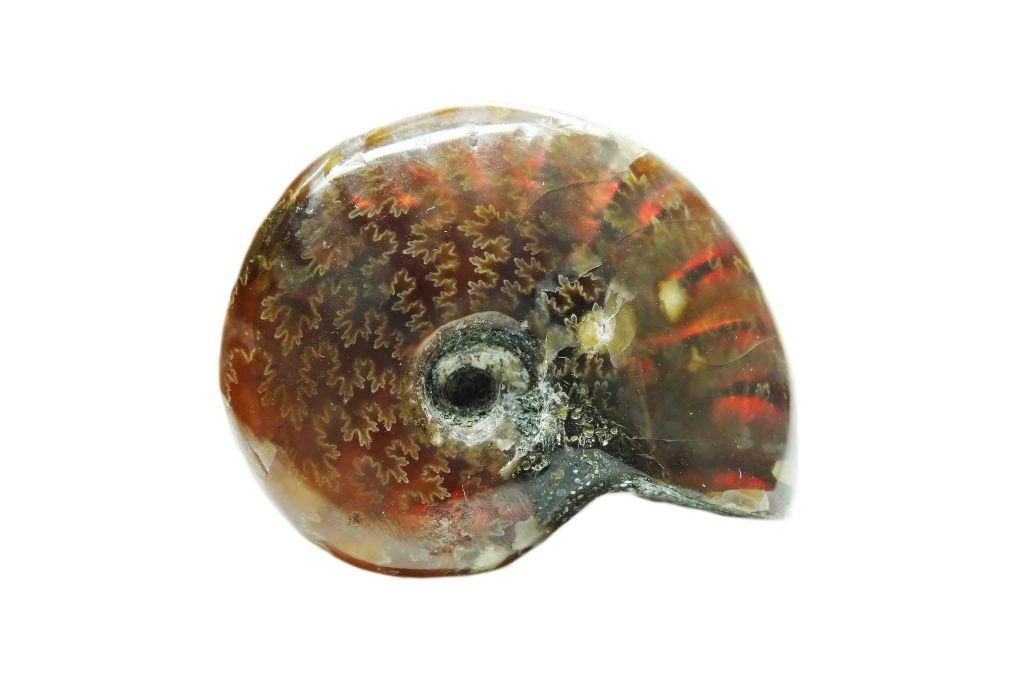
This is the organic gemstone form of Ammonite. It is rarer and more expensive, as it features fantastic bright rainbow colors of flashy iridescence. Ammolite is known for its benefit of activating all seven primary chakras. It supports a vibrant and balanced state of health on all levels.
A lovely practice to attune to the multilayered benefits of Ammolite is to hold it at the level of each chakra and chant a seed mantra relating to each chakra. You can also visualize the color of each chakra as you hold your Ammolite near it and repeat a resonating affirmation related to each of the chakras.
Calcite Clam
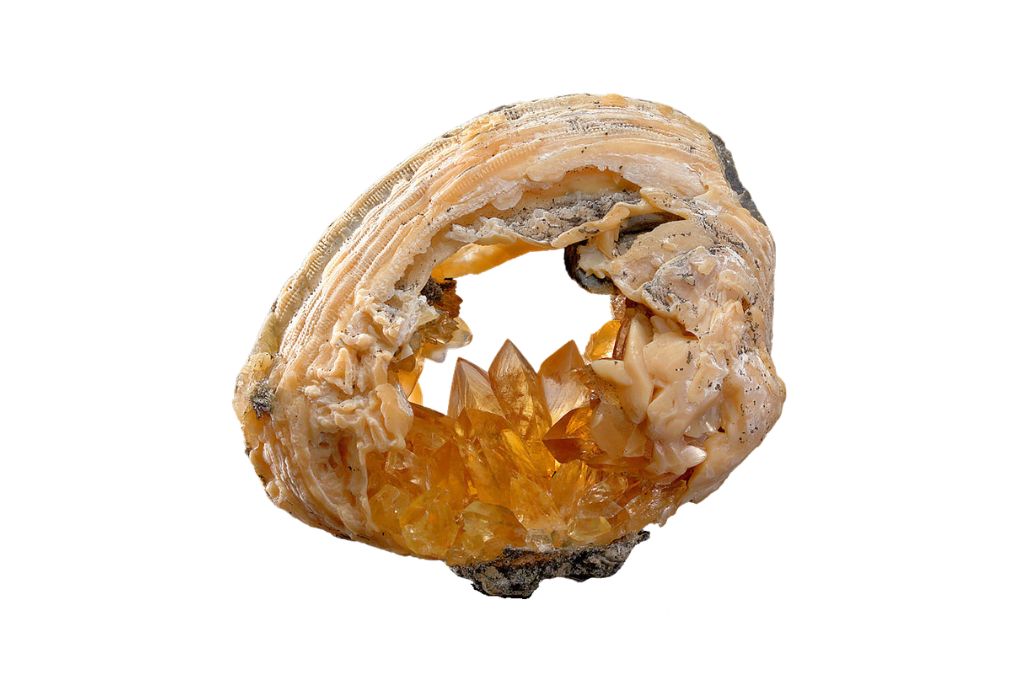
This fossil is developed from clams that have been replaced by the mineral Calcite and can be filled with well-formed crystals. Calcite Clam crystals are typically whitish to golden honey brown in color, and specimens can fluoresce under UV light.
Energetically, they are quite similar to typical Calcite crystals but also have a nuanced vibration that includes a connection to the past, the process of transformation, and the Water element. Calcite Clams are useful for trauma healing. They encourage us to focus within, gaining clarity and resolve, especially related to hurt from the past, including from beyond your current lifetime.
A gentle yet potent way to work with Calcite Clams for this level of deep integration and healing is connecting with the energy of this type of fossil crystal during a breathwork session. Set your intention before the session while holding your crystal, and then allow the somatic process and crystal vibrations to support you.
Stromatolite
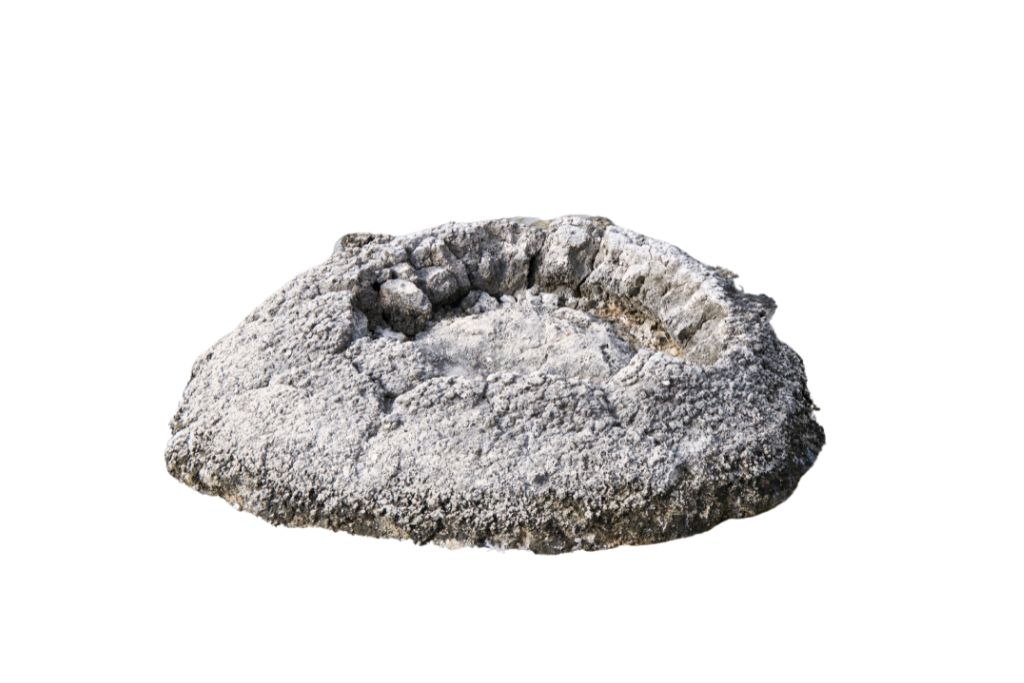
These are some of the oldest fossils. They are layered rocks created due to the presence and activity of ancient cyanobacteria. Stromatolites are primarily composed of calcium carbonate, which forms Calcite or Aragonite, but can include other minerals, too
It is often available as a tumbled stone, easy to include in your crystal healing practices to deepen your connection with the ancient intelligence of planet Earth.
Keep a piece of Stromatolite nearby when engaging in physical or energetic studies of the Earth elements, as it helps us to focus and be dedicated to understanding, connecting, and integrating new information, concepts, and upgrades as we access them.
Coprolite
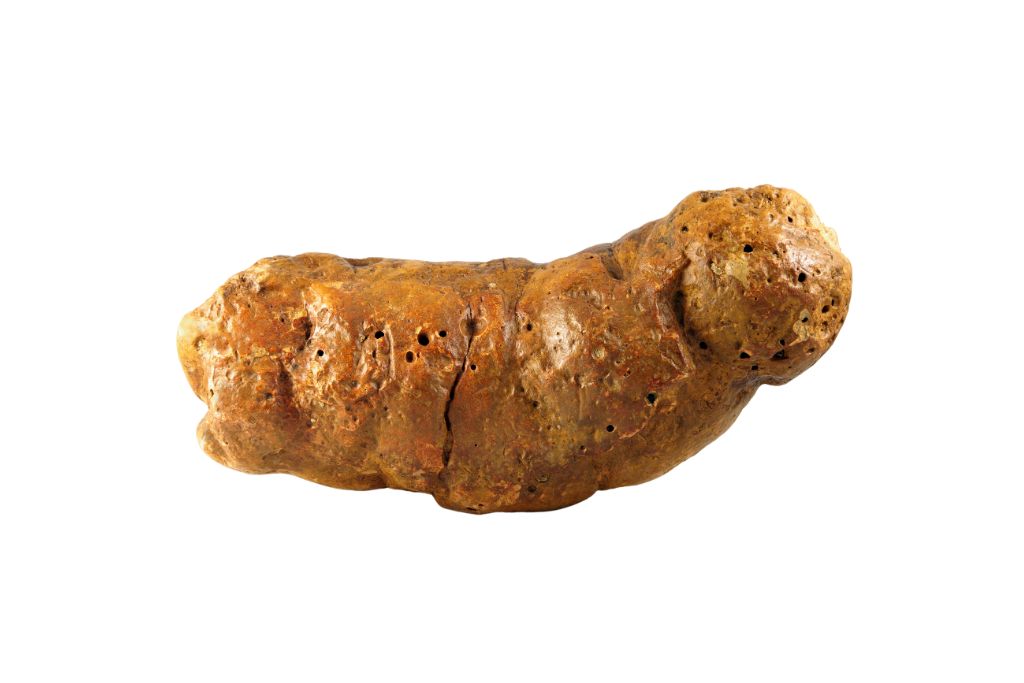
These are droppings of ancient creatures turned to stone through mineral replacement over millions of years. Coprolites can be composed of Apatite, Silicates, Carbonates, and Iron Oxides. They are pigmented with bright reds, oranges, green, gray, and brown colorations due to certain trace minerals
Coprolites have been helpful for us to learn more about the life and habits of ancient creatures. In crystal healing, Coprolite energy can contribute to the health of the digestive system and encourage detoxification. These stones remind us to be humble, to stay connected to the earth and our bodies, and to have a sense of humor.
Display Coprolite somewhere in your home as a reminder and conversation piece. It inspires contemplation on how something that is typically considered gross actually turns into something beneficial and even beautiful. Even feces that don’t turn into Coprolites have contributed to the soil’s nutrients, continuing the natural cycle of physical beings being nourished by and eventually returned to the Earth.
Petoskey Stone
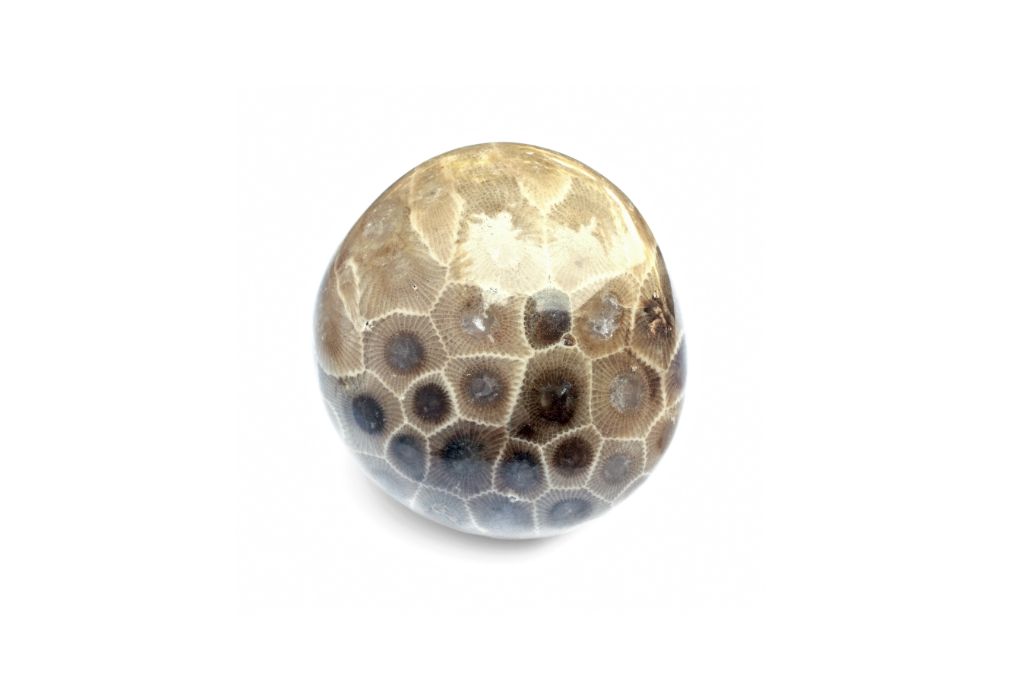
These intricately patterned, soft Calcite stones (that can sometimes feature Pyrite) are fossilized skeletons of the six-sided coral called Hexagonaria Percarinata. Petoskey Stones are typically gray, light brown, or pink and are primarily found in Michigan
This is a fossil crystal that helps us to access ancient knowledge within. It helps to cleanse feelings of shame or fear and regulates mood swings. A Petoskey Stone is also a useful stone for improving skeletal health. Its presence encourages increased patience, wisdom, nonlinear timeline awareness, and expanded perception as it energizes the Third Eye Chakra.
It is recommended to attune to the energy of the Petoskey Stone through daily meditation for an extended period for significant benefits. To connect with stone in a moment of need, place it over your Third Eye and take a few deep breaths to align to a state where you can more easily perceive a higher perspective.
Fossil Geodes
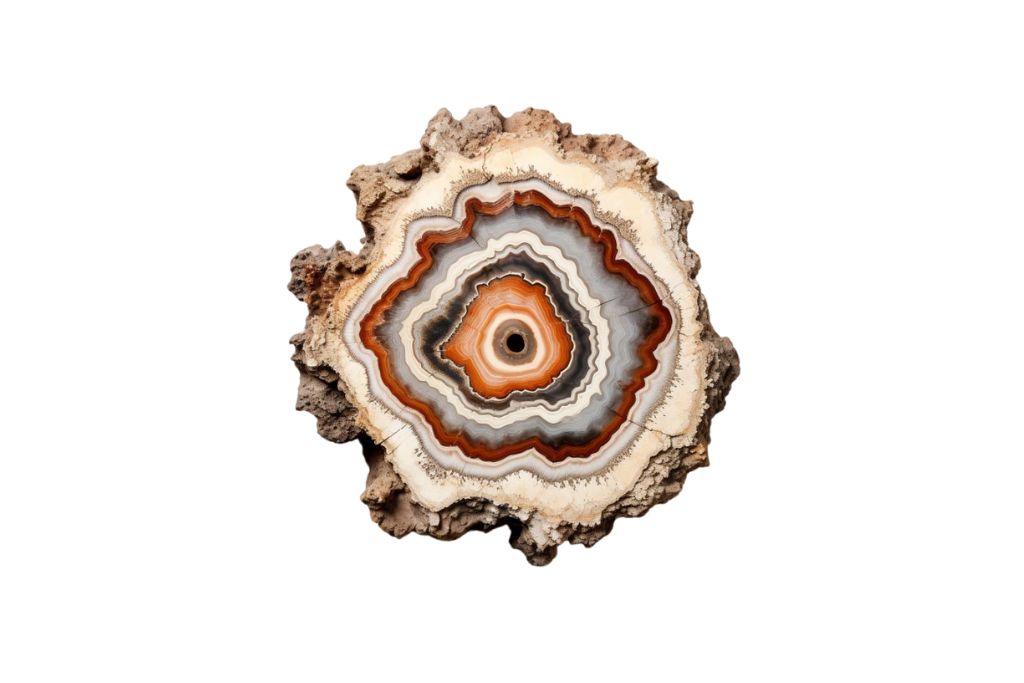
Different types of fossils become geodes. In the right environment, spaces within the fossilized creatures are filled with minerals that can form a layer of small, formed crystals covering the inside of the specimen. This can take place inside ammonites, crinoids, dinosaur bones, clams, and petrified wood.
Fossil Geodes generally contain different Quartz varieties or Calcite and are great to work with for inner healing. Geodes boost creativity and energy, and they help us achieve alignment within. They are protective and bring a balanced, grounded, and spiritual awareness. The best way to work with Fossil Geode is during a silent and stillness meditation practice
Amber
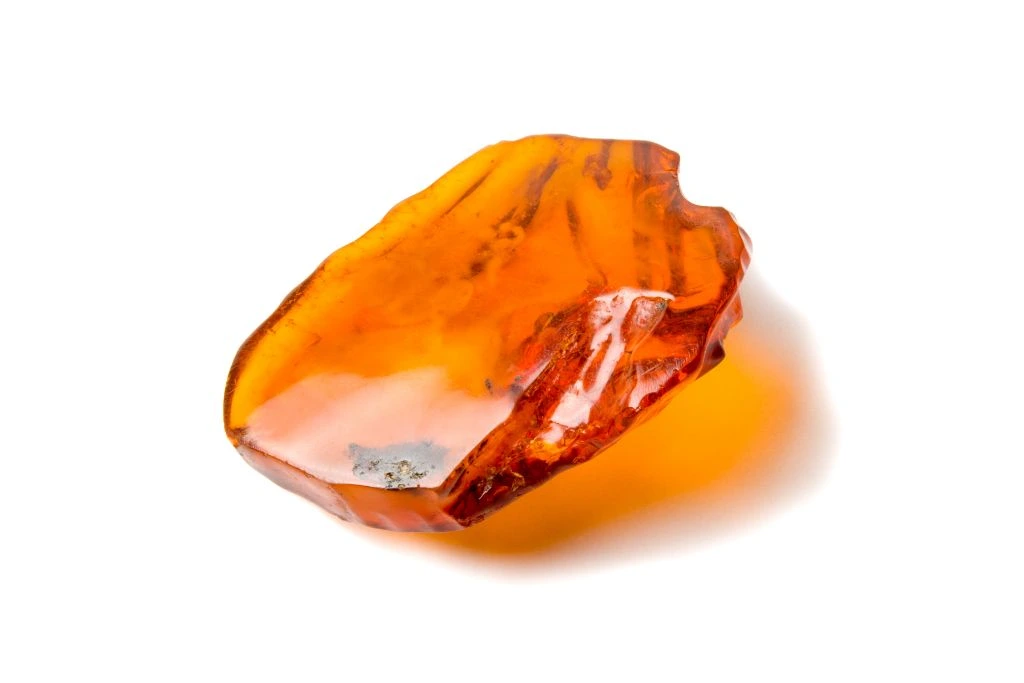
Amber is a fossilized ancient tree resin. Technically, it is not a crystal due to its organic makeup and amorphous structure. It can be regarded as an organic gemstone fossil or a mineraloid. It forms in a few different colors and ranges in translucency
Some Amber specimens have also encased insects or plants trapped within them, perfectly preserved. The composition of Amber specimens is quite complex and comes to be due to the specific environmental conditions that resulted in fossilization, a process that includes the burial of the tree resin, chemical changes, hardening, and mineral replacement.
This type of fossil mineraloid has such a lovely, energetic presence that soothes tensions and increases patience and connection to nature. Amber can boost the frequency of gratitude in your life, and the best way to connect with it is by holding it and engaging in any type of intentional gratitude practice.
Fossil Opals
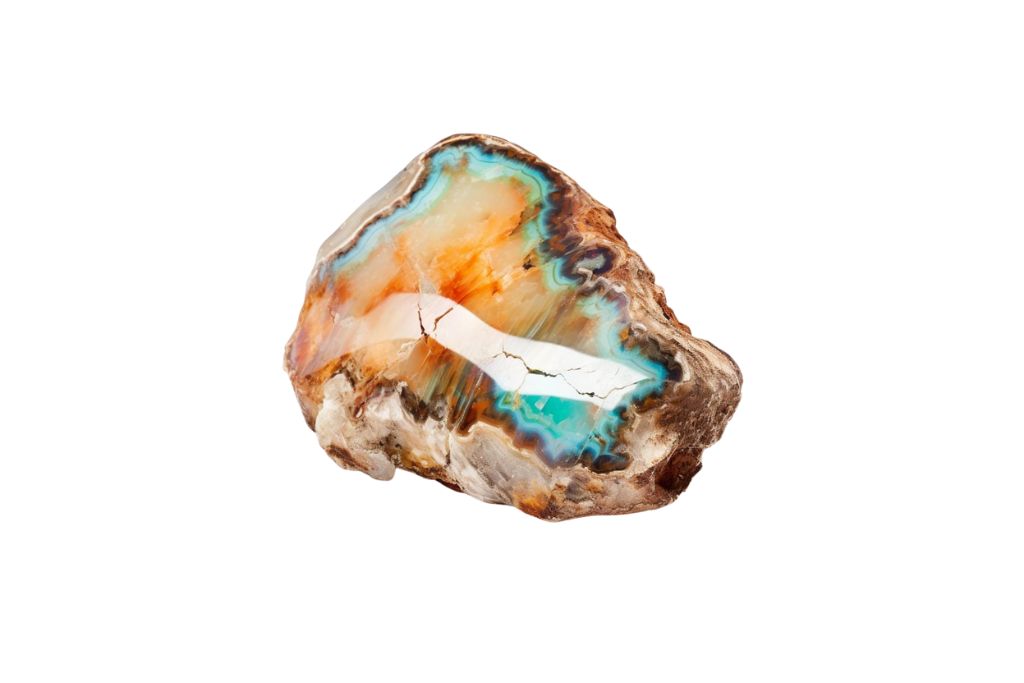
Opal can be included within cavities in fossils, formed within spaces in rocks created by an organism creating a mold fossil, or it can capture great detail of an entire fossil organism through replacement or opalization as silica-rich fluid flows through an organism in a suitable environment.
Wood, bone, teeth, ammonites, and belemnites are some of the organisms that have been found as Opalized fossils, which are generally quite rare. Fossil Opals can be used to boost inspiration and joy. They also facilitate karmic healing, support us in adapting to change, and encourage harmonious emotional expression.
Hold your Opal fossil and contemplate the wonder of the creature and the divine alignment of the geological processes that led to its formation. Practice crystal gazing to be inspired by the beauty and magic of nature.
FAQ
Can Fossils Turn to Quartz?
Yes, when organisms are fossilized by being replaced with silica through the process of replacement or permineralization, the organism can be turned into various types of Quartz.
Why Do Fossils Crystalize?
Fossils can turn into stone or crystal over millions of years due to the process of fossilization called permineralization, where minerals replace the organic matter, accumulate within fossils, and crystals may form within spaces in the fossil. They may also form due to alteration and recrystallization.
What is a Petrified Fossil?
A petrified fossil has undergone the process of permineralization, where certain minerals replace the structure and preserve great details, even cellular-level features of an organism. A great example of a petrified fossil is Petrified Wood.
What is Permineralization?
Permineralization is a fossilization process that includes the burial of an organic organism and mineral-rich water saturating the organism underground and slowly replacing its organic structure, accumulating until the entire organism is petrified and completely a preserved stone or crystallized fossil.
What is Opalization?
A permineralization process that involves silica-rich fluid, which results in the creation of fossils composed of Opal that often displays a gorgeous play of color known as opalescence.
What is Pyritization?
A permineralization process that includes the reaction of hydrogen sulfide with dissolved iron in the perfect environmental conditions over millions of years, resulting in the detailed replacement preservation or fossilization of an organic organism with Pyrite
Start Using Fossil Crystals
Shockingly, this was only a small excavation of the varieties of fossil crystals that can occur. There are so many interesting different specimens; there are rarer ones that may contain other minerals and crystals, and there are always new discoveries being made.
I hope you are inspired to keep learning and forming a personal connection with the ancient magic and wisdom of fossil crystals. Here is a summary for a quick reference of some of the physical and metaphysical aspects of the specimens we chose to discuss in the article above.
